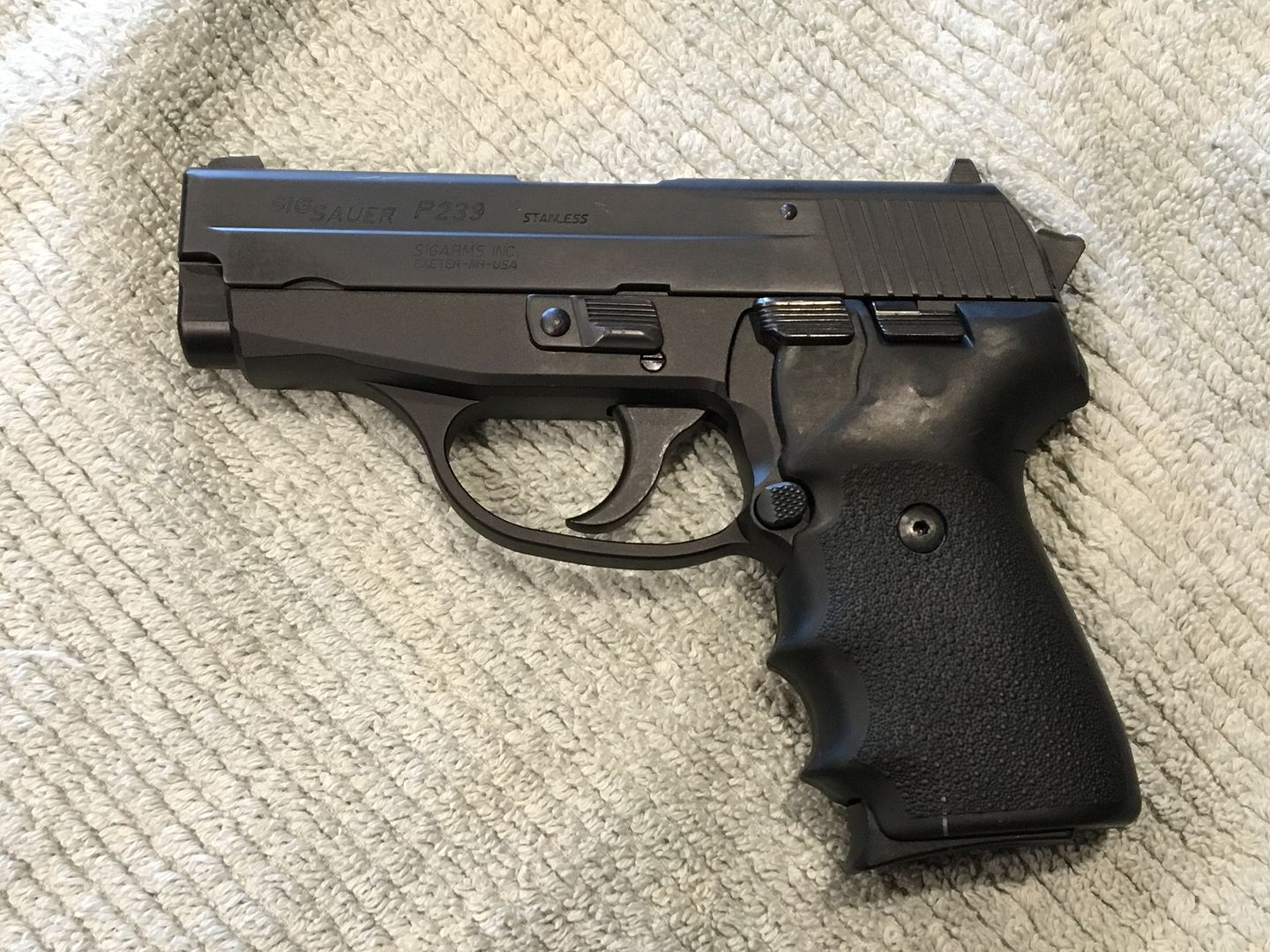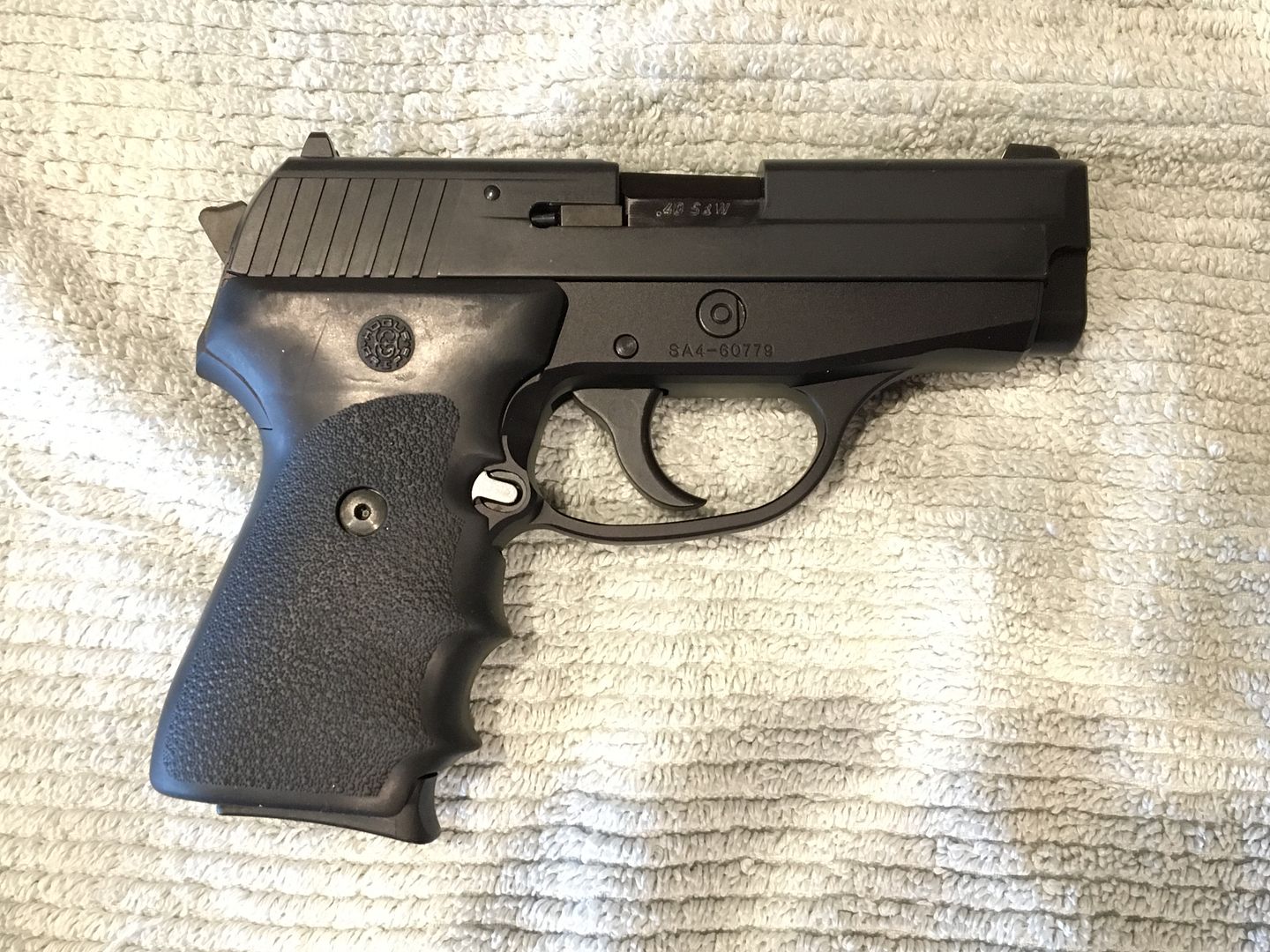Go  | New  | Find  | Notify  | Tools  | Reply  |  |
| Member |
What does the "SAS" on the slide mean ?? I've looked at old posts and online without success. I've seen it on P226's and P238's, not sure how many more models have that lettering or what it means. | ||
|
Frangas non Flectes |
Sig Anti Snag Dehorned “carry melt” option. ______________________________________________ "If the truth shall kill them, let them die.” Endeavoring to master the subtle art of the grapefruit spoon. | |||
|
| Member |
TY !! How about "DAK" ?? I don't know much about Sig's but I'm learning.
| |||
|
| Left-Handed, NOT Left-Winged! |
Double Action Kellerman | |||
|
| Member |
Here's my P228 SAS  | |||
|
| Member |
Before you ask, Kellerman was the inventor of the mechanism. Around 2004 SIG perfected a trigger system that was the design of one Harald Kellermann of Eckernförde, Germany, home to J.P. Sauer, the Teutonic home away from home of the Swiss-based company. This trigger system, to put it country simple, is like that of a double action only revolver, but with a few changes. When you pull it, the company’s specs advise that you get a full-time and constant 6.5-pound trigger squeeze and two reset points, one short, and one full-length. This allows the shooter to grow accustomed to the same trigger squeeze each time such as on a striker-fired gun without sacrificing the benefits of a hammer-fired gun.
______________________________________________ Life is short. It’s shorter with the wrong gun… | |||
|
| 7.62mm Crusader |
Great information CQB60 of the DAK system. Our Member Sigfreund is quite knowledgable of that DAK trigger. Those I have seen on line for sale seem to be lower priced as perhaps DAK is not so well accepted. I believe it was brought about for Law Enforcement? Any how, I have a little better understanding of DAK now. Would be interesting to see how Sig achieved this with internal parts. My thinking is this would be a good trigger in shorter sight radius autos vs long for accurate shots, less sight upset. OK, back to the acronyms. | |||
|
| Member |
ASE: A lloy S tainless E lite End of Earth: 2 Miles Upper Peninsula: 4 Miles | |||
|
| Learn it, know it, live it |
Welcome to the forum. As others stated SAS is Sig Anti Snag. They round the sharp edges of the slide. Prime example... P239 non SAS.   P239 Gen 1 SAS   After CCR customization.. BTW I sold this pistol years ago..    | |||
|
Member |
At least for me I can't really tell the difference on a p239 SAS and a standard one... but then the standard one was pretty much designed to be carried concealed. As for DAK... I guess I'm the odd man out, I don't really care for it.... I guess if you trained exclusively with it then it might give you some kind of advantage over the DA/SA in competition or such.... My Native American Name: "Runs with Scissors" | |||
|
| Freethinker |
No one asked for my input when the DAK trigger was being contemplated and designed, but it always seemed to me that there were two factors that led to the development of the system to replace the original double action only (DAO) trigger that could be had for the Classic line SIGs for a period. The first was that it reduced the trigger pull weight by increasing the mechanical advantage of the mechanism. The original DAO mechanism merely eliminated the single action cocking notch from the hammer and therefore its pull weight was the same as the double action pull of the traditional DA/SA mechanism. The DA pulls of the DA/SA guns I measured over the years usually ran 9-10+ pounds. The original DAK pulls were as low as 6.5 pounds, but that increased some when the mainspring was made more powerful and the short reset point pull is also heavier, usually 8+ pounds. The second feature of the DAK trigger that was an improvement over the old DAO was the availability of a shorter trigger reset point after the first shot was fired in a string. The long reset that required letting the trigger move fully forward was one of the complaints about the DAO trigger, and the optional short DAK reset helped with that. Pistols with the DAK trigger were adopted by a few LE agencies, and I found that some officers did better with them when trained properly than traditional DA/SA pistols. They were, however, never very popular with officers in general or the shooting public. Hammer fired double action only pistols like the DAO and DAK are, like exposed hammer double action revolvers, the most forgiving of unsafe gun handling mistakes because of their typically long and usually somewhat heavy trigger pulls and because controlling the hammer prevents their being fired unintentionally. I am seriously considering changing my primary defensive handguns from DAK pistols to SIG’s striker fired guns because I shoot them better. I have been hesitating, though, because of how tolerant the former are of mistakes, and even though I am very experienced with carrying handguns and very careful when handling them. ► 6.0/94.0 To operate serious weapons in a serious manner. | |||
|
| My other Sig is a Steyr.  |
Welcome to the forum! There are a few more acronyms to go. One that comes to mind is the SRT. Lucky for us, these are two SRTs. One is a trigger, the other is a kit installed internally. Both examples below have short reset kits installed. The one on the left has a short reach trigger. | |||
|
| Member |
So what does the acronym SIG resolve to? Or is it an acronym? You knew the job was dangerous when you took it, Fred! - Henry Cabot Henhouse III, aka "SuperChicken" | |||
|
Oriental Redneck |
The original Schweizerische Industrie-Gesellschaft (Swiss Industrial Company). Q | |||
|
| Powered by Social Strata |
| Please Wait. Your request is being processed... |
|
© SIGforum 2025